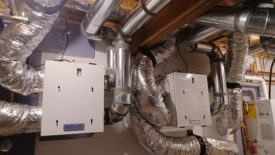Tips for Ducting Residential Energy Recovery Ventilators
Sizing, positioning and ducting an ERV to bathroom vents, not only circumvents traditional fans, but introduces clean outdoor air strategically balanced to the exhaust-CFMs.
Read More

